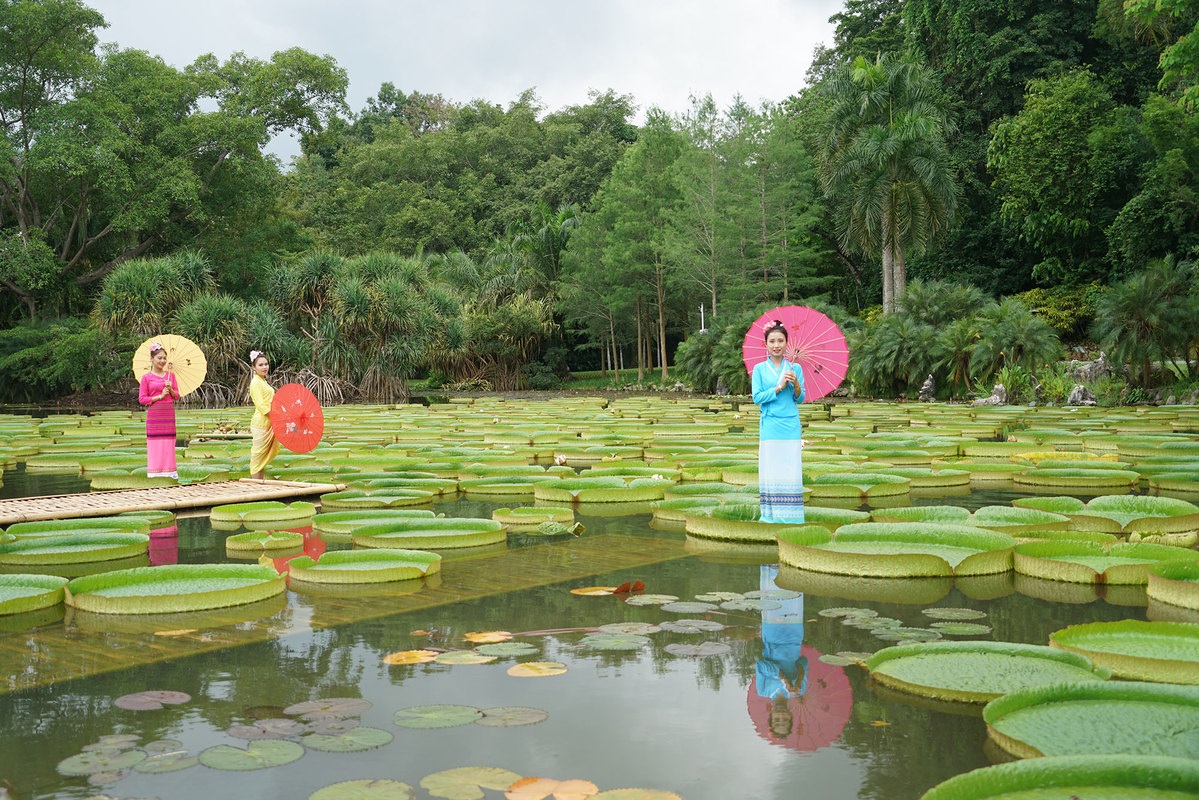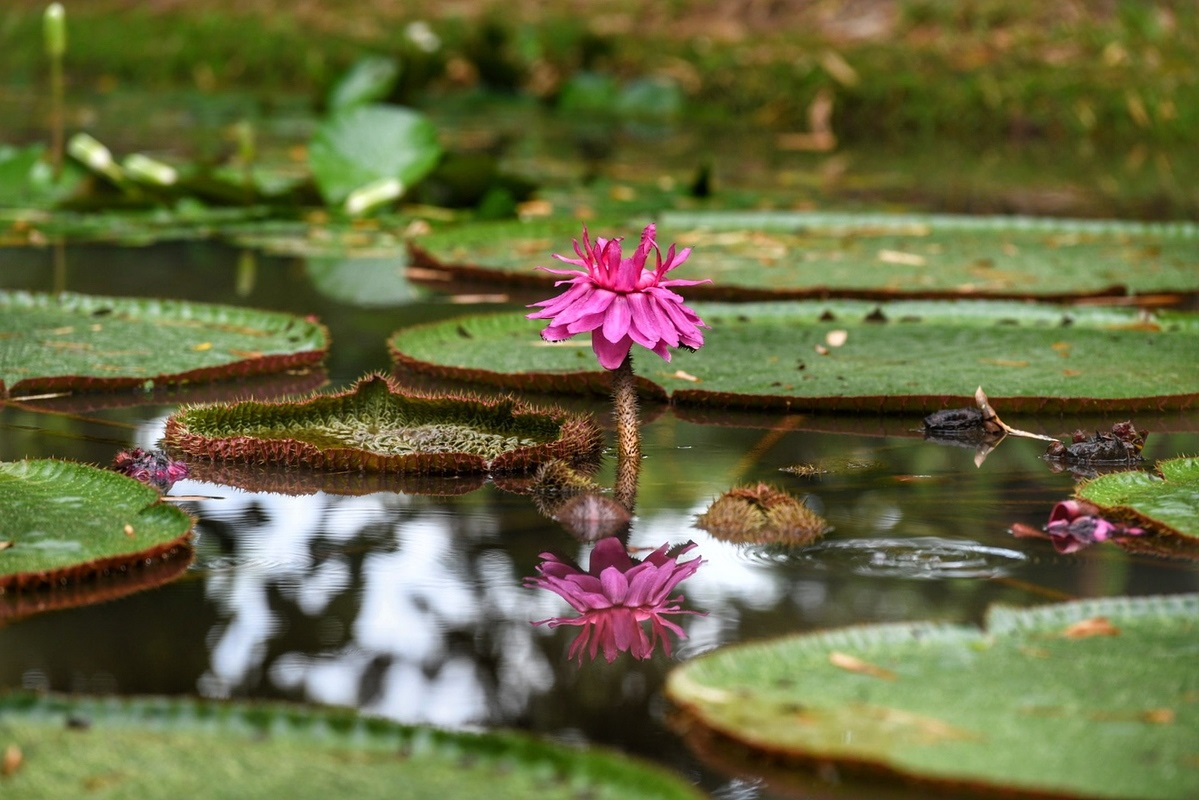

A visitor stands on the Lotus Victoria leaf in the Xishuangbanna Tropical Botanical Garden of Chinese Academy of Sciences in Southwest China's Yunnan province. [Photo by Zhang Jiaojiao/Provided to chinadaily.com.cn]
A Lotus Victoria, named after the British Queen Victoria, has become a tourist attraction with tens of thousands of visits in the Xishuangbanna Tropical Botanical Garden of Chinese Academy of Sciences.
The Lotus Victoria, according to the garden in Southwest China's Yunnan province, was introduced in 1963.

The Lotus Victoria has attracted thousands of tourists to the Xishuangbanna Tropical Botanical Garden of Chinese Academy of Sciences in Southwest China's Yunnan province. [Photo by Zhang Jiaojiao/Provided to chinadaily.com.cn]
It has the largest leaf of any aquatic plant, with a diameter up to two meters, and is able to hold objects as heavy as 70 kilograms.
Its leaf features thorns that face toward the water, which provide the plant a means of protection, and the Lotus Victoria's flower changes color from white to pink and then to purplish pink for each of its three days in blossom.

The Lotus Victoria has attracted thousands of tourists to the Xishuangbanna Tropical Botanical Garden of Chinese Academy of Sciences in Southwest China’s Yunnan province. [Photo by Zhang Jiaojiao/Provided to chinadaily.com.cn]
There are two symmetrical openings around the leaf's edge, which allow water to flow away when it rains. Without them, water would remain on the leaf and make it harder for the plant to photosynthesize.
While the lotus will be in the garden all year, the best time to see it is from June to October, according to the schedule released by the garden. (chinadaily.com.cn)

86-10-68597521 (day)
86-10-68597289 (night)

86-10-68511095 (day)
86-10-68512458 (night)

cas_en@cas.cn

52 Sanlihe Rd., Xicheng District,
Beijing, China (100864)

